WHITE MUSHROOMS & YELLOW FLOWERS
On the 9th of November this year, I spent the whole afternoon in the abandoned stone quarry in Marlera, the coastal area situated a couple of kilometers from the village of Liznjan and about five or six kilometers from where I live. I found some interesting spiders and insects there but all that material will appear in a long, I would even dare to say epic, post I'll be ready to publish at the end of the year.
For today's more modest post, I prepared some elegant white mushrooms ...
... and lovely yellow flowers, I came across on my way to the quarry, on the stony terrain only about fifty meters from the entrance.
Having the setting of the post in mind, the most interesting aspect of the mushrooms I'm presenting today is their existence.
That stony part of Marlera isn't a fungi-friendly environment. I don't remember seeing a mushroom there in all the years I regularly rambled the area.
In the following photograph, you can see the same scene and the same mushroom, but ...
... but I zoomed out a bit so that you can see more of the surrounding vegetation.
The large folded leaves in the foreground belong to the Verbascum undulatum plant. The milk-white mushroom looks great in all that greenery.
Here I zoomed out even more. Dipsacus fullonum is the most prominent plant whose large leaves created the rosette in the center of the shot.
Leucoagaricus leucothites is a robust, meaty mushroom, certainly not a small one, but it surely does look small in this photograph compared to the nearby plants.
Here I came closer to the mushroom and dug a shallow hole in the ground that allowed me to put the camera in a position that could capture the gills on the underside of the cap.
Just like the upper side, the gills are white. Everything is white on this mushroom, even its scientific name. Both parts of the two-word name include the Ancient Greek leuco which means white, pale, or colorless.
The yellow flowers promised in the title ...
... belong to the Oxalis corniculata ...
... a plant that probably comes from southeastern Asia but was introduced to Europe a long time ago. A couple of hours ago, while preparing this post, I found that it was first described by Linnaeus in 1753, and the dude, I mean Linnaeus, used specimens from Italy. It also seems that Linnaeus knew the plant had been introduced to Italy from the east before 1500. Italy isn't far from here where I live so, yeah, let's assume that the plant has been here since those good old times, and if we are wrong - who cares?
Oxalis corniculata is a very cosmopolitan plant, that's for sure. It generally appears in civilized areas like parks & gardens, but is not so unusual to find it in forests, scrublands, and meadows.
At one point, while I was busy photographing one of the Leucoagaricus leucothites fruiting bodies ...
... a small fungus gnat landed on the top of the cap ...

... or more precisely, on some seeds that were lying on the top of the white cap. When that gnat flew away ...
... another one, with a considerably thicker abdomen, took the same place less than a minute later.
I can confidently say that these tiny flies belong to the Sciaridae family, but I can't tell you the name of the species.
If you take a good look at the upper left corner of this shot, you'll notice a small blurred detail that looks like a bit of dark dirt on the white surface of the cap.
In the following photograph ...
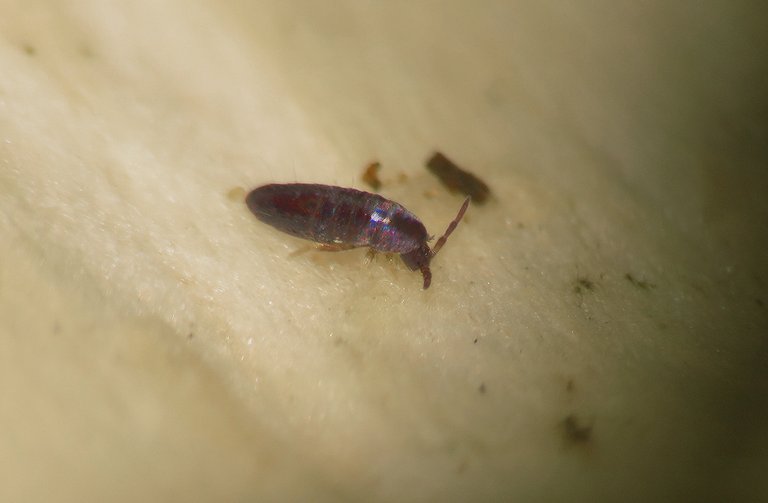
... I came closer to the detail and put it in focus so you could now recognize a tiny arthropod in what was just a blurred stain in the previous picture.
This is the Lepidocyrtus cyaneus, a springtail from the Entomobryidae family.
As the young Leucoagaricus leucothites fruiting bodies grow and develop in this environment, they often get deformed by the obstacles provided by the surrounding vegetation.
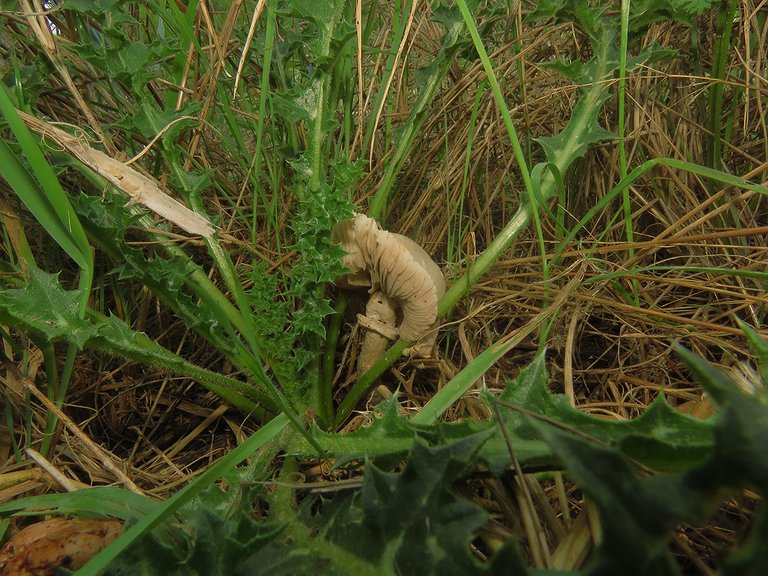
In this, the previous, and the following shot, the mushroom has grown among the leaves of the Scolymus hispanicus thistle.
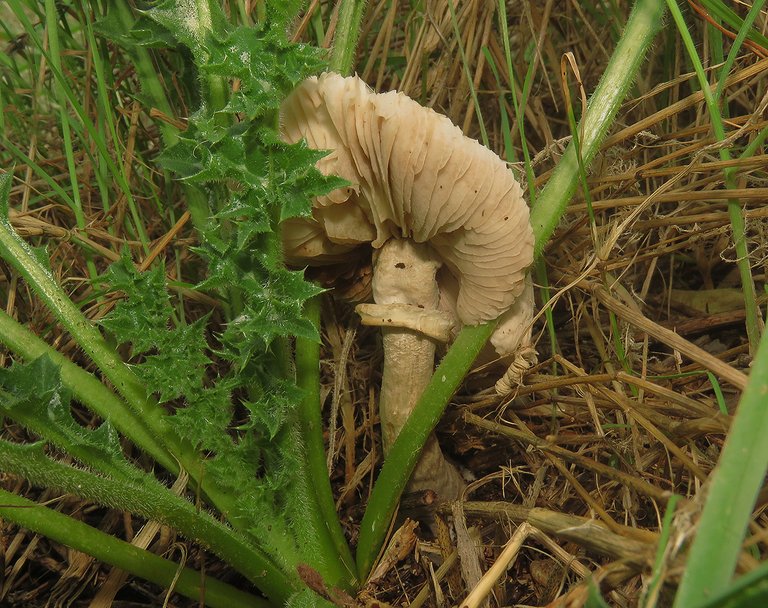
Many herbaceous plants that grow in the stony parts of Marlera are resilient and sturdy.
The Leucoagaricus leucothites mushroom shown in these two shots has grown surrounded by tall grass so the fruiting body is a perfect parasol.
The photograph on the right was taken in ambient light, while for the one on the left, I used the flash of my camera. The difference isn't big or important, but is still noticeable. I mean, I like to experiment with light, that's what I wanted to say.
Sixteen days ago, on the 15th of November, I came across Leucoagaricus leucothites in the coastal area near the harbor of Liznjan, four or five kilometers from Marlera.
Most of the fruiting bodies there were growing in the dense layer of bent grass, and were barely visible. Some of those mushrooms ...
... were contorted in an interesting way.
The following link can take you to that old post if you wish to see more :
https://ecency.com/hive-166168/@borjan/deep-in-the-grass
In the following photograph ...
... one of those taken on the 9th of November in Marlera, you can see another fungus gnat on the top of the Leucoagaricus leucothites cap.
In this wide shot, besides the interesting Mediterranean vegetation and the mushroom you already saw quite a few times in today's post, you can also see the white fragments of the unpaved stony road that leads to the quarry.
Here you can take one last look at the Oxalis corniculata plant.
AND THAT'S IT. HOPE YOU DIDN'T FIND THIS PHOTO STORY WITH ONLY ONE MUSHROOM SPECIES TOO BORING AND REPETITIVE. AS ALWAYS HERE ON HIVE, THE PHOTOGRAPHS ARE MY WORK.
Oh, I almost forgot! This is a contribution to #FungiFriday by @ewkaw
The following links will take you to the sites with more information about the protagonists of this post. I found some stuff about them there.
https://en.wikipedia.org/wiki/Leucoagaricus_leucothites
https://en.wikipedia.org/wiki/Oxalis_corniculata
https://en.wikipedia.org/wiki/Sciaridae
https://en.wikipedia.org/wiki/Lepidocyrtus_cyaneus

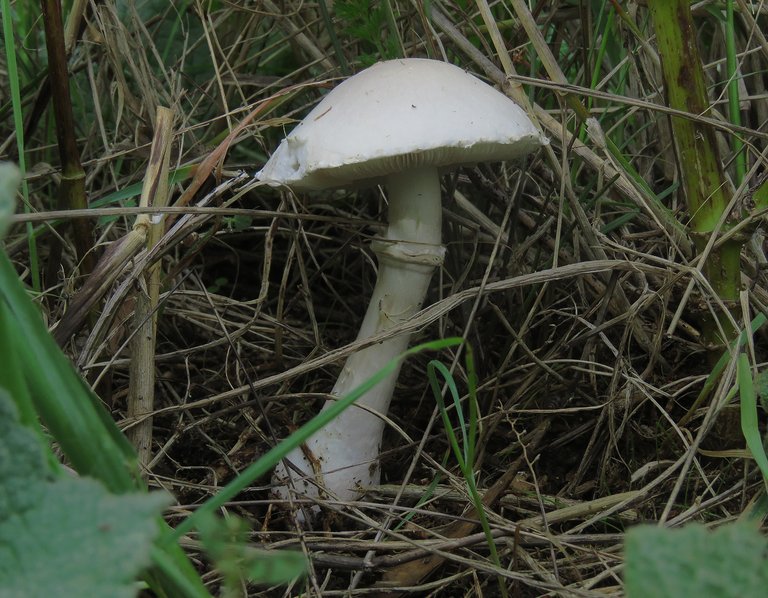
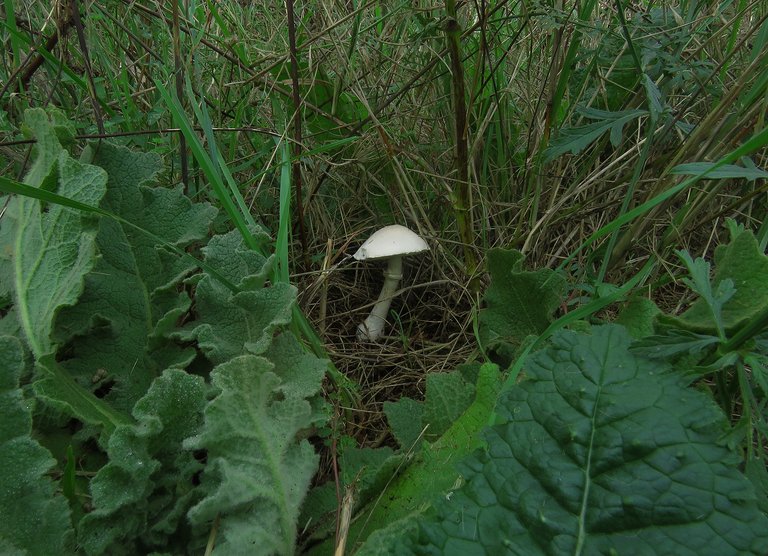






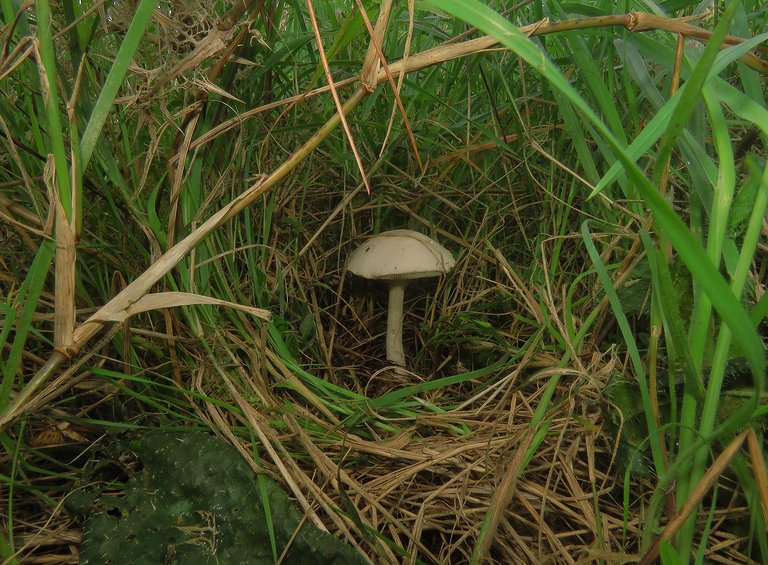


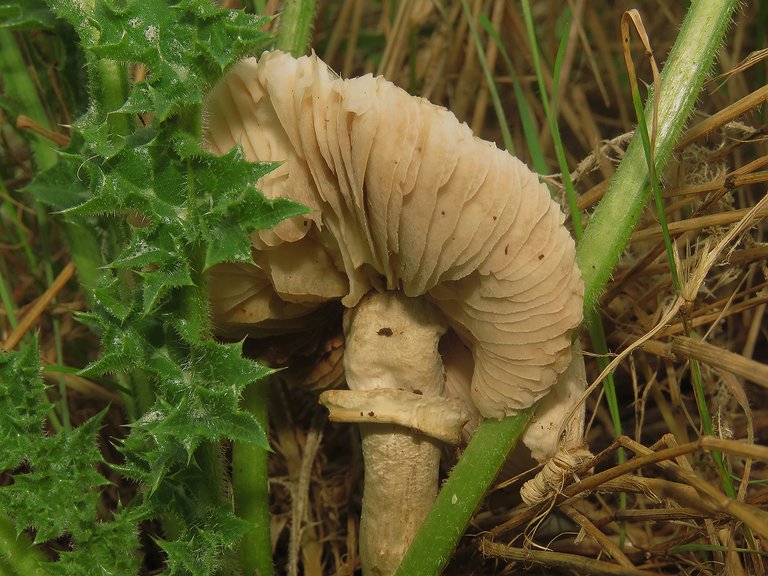

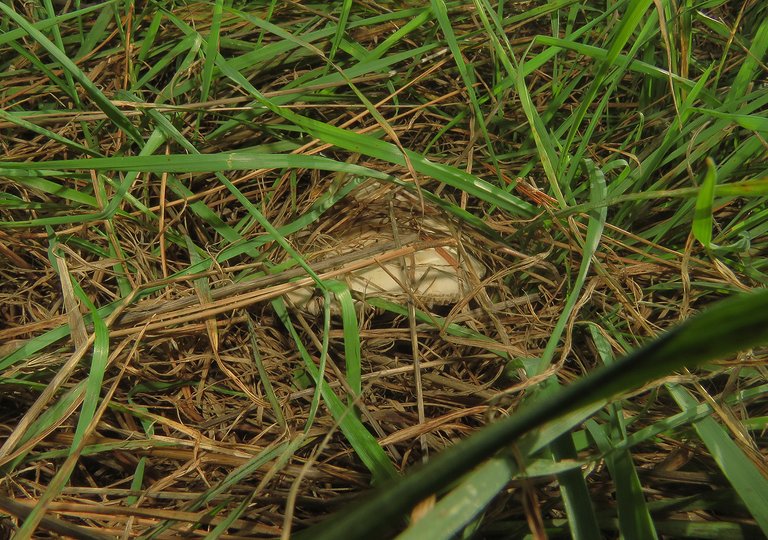
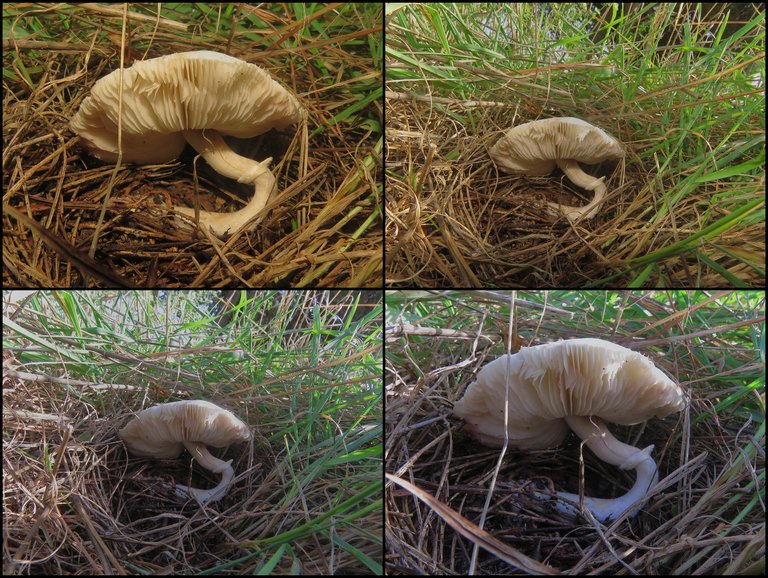
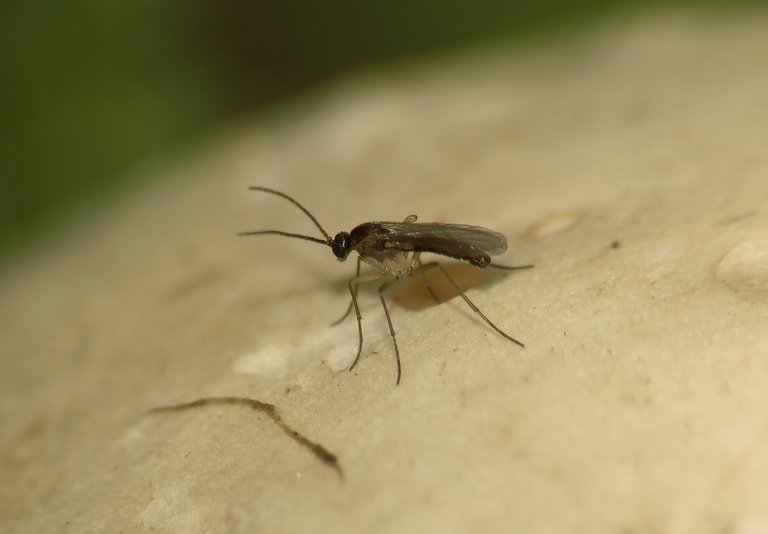


Wonderful autumny glory ...
I like the appearance of this mushroom, I look and see something similar to those joints that we use in the aqueduct pipes, I will place a similar image so you understand what I'm talking about, the point is that nature is inspiration for people to create and this union it is quite possible that it has already been inspiration to create what we now use in construction and maintenance.


😃 Yes, it has some similarities.
Mushrooms like this really like to hide behind bushes
😀 True, that's a good observation.
You know so much of these organisms, are you a biologist? You certainly explain, with so much clarity.
I find the mushroom very resilient and at that corner, it stands so regal. Is it edible?
The yellow flowers, oxalis, they look like Lilies but I know they are not.
Thank you for this elaborate post.
I'm learning while preparing these posts. I never studied biology or anything remotely similar. But I have always been interested in drawing and photographing plants and animals, so I'm learning now along the way. The Internet helps a lot, you can find plenty of useful information on the Internet.
I haven't seen any fly with this colour before though.
Cool. 😀 The most interesting insects are the ones you have never seen before.
Amazing photos 😍
These types of mushrooms are also found growing here, they look very beautiful and are known as frog umbrella in our region. Anyway the flower is very beautiful and you have shared some wonderful photography.
You were very creative by digging up the ground and putting a camera in it so you could take photos without having to damage the mushrooms...
Cool 😎👍
😃 That's the most fun part of photographing 😂 Thinking about new strategies to get something done.
The mushrooms you share are very unique, plus these yellow flowers are a perfect find. I am very impressed by your post. thanks for sharing. and happy Friday.
Thank you. 🙂 Have a great Friday.

It is incredible that with so many herbs I was able to find this beautiful mushroom, dear friend @borjan. I love its shape, the ring and the color
I appreciate you introducing us to all this beautiful wildlife.
May you enjoy the weekend
Have a great weekend. 😃
Those mushrooms look quite big
If you’re one of those who eat mushrooms, you could eat them, lol
Are you?
I didn't eat them. 😀 I wasn't sure if they were edible. Some poisonous ones look quite similar so I let them be.
Have been hearing people say mushroom is sweet but haven't had any experience of tasting one and would like to
Some are tasty, others are poisonous. There are many kinds.
Yeah I heard of those
This mushrooms are beautiful, they look so whitish and stand alone in the bush. The shape is amazing, I guess it did not have any other mushroom competiting with it so it came out in a good shape
I always love taking the edible mushrooms. I missed them
Saya memiliki satu hasil buruan setelah hujan berhenti, besok akan post tentang jamur, dan yeah semua photo jamur anda sangat cantik 🥰
Terima kasih. Senang Anda menyukai jamur putih ini... dan saya juga senang Anda menemukan beberapa jamur juga
Beautiful photographs 😍
You got lovely finds right there either mushrooms or even flowers.
https://twitter.com/lee19389/status/1730932072536006885
#hive #posh
Wow... You got a very beautiful mushroom today, I really liked it, thank you very much for sharing it with us. May harini please my brother
Amazing information about plants mushrooms
It looks really cool because I've only recently seen mushrooms that big and the flowers also look really beautiful. Thank you for sharing with us
https://twitter.com/jewellery_all/status/1731022714104696993
You always amazed us with beautiful captures.
🙂
